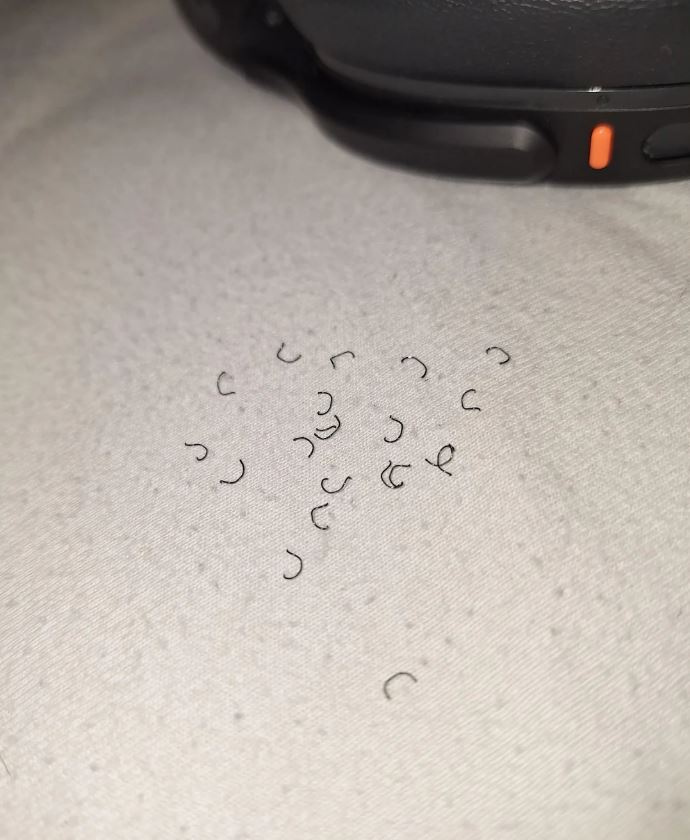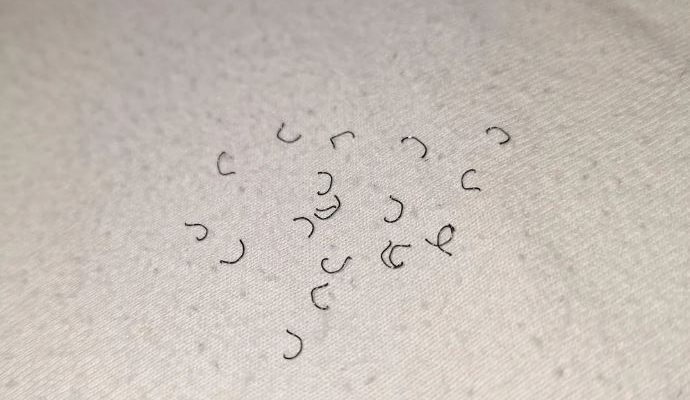Have you ever woken up and found tiny curved shavings on your bed, your desk, or even on your wrist after removing your smartwatch? At first glance, they might look like miniature Velcro hooks, leaving you scratching your head—especially if there’s no Velcro anywhere nearby. The confusion can be frustrating, and you might wonder if there’s something more mysterious going on. But the answer is surprisingly simple and a lot more common than you might think.

These little shavings actually come from something you probably wear every single day: your smartwatch or fitness tracker band, especially if it’s made from silicone or rubber. These mysterious, Velcro-like curls are the result of wear and tear caused by everyday movement, friction, and even sweat. Think of it like a road that’s constantly being driven on. Over time, the pavement wears down and bits of it start to break away. That’s exactly what’s happening to your watch strap. As you go about your day, your band rubs against your skin, your clothing, your desk, and anything else your wrist touches.
Slowly but surely, tiny pieces of material start to peel off and form those odd little hooks you find later. Several factors can make this happen faster. First off, the constant twisting, turning, and stretching of your wrist while wearing the watch contributes significantly. If you’re constantly adjusting your watch or moving your hands frequently, you’re accelerating the breakdown process. Secondly, sweat and natural oils from your skin play a big part.
When you wear your watch during workouts or for extended periods, moisture collects under the band, and your skin’s oils can start to deteriorate the strap material. This combination weakens the silicone or rubber, leading to tiny flakes breaking off. Friction from resting your wrist on a desk while typing or rubbing against long sleeves also adds to the wear. Even the way your coat fits over your watch or how often your wrist hits the armrest while driving can contribute to the problem. And not all bands are made the same—some are far more prone to this kind of shedding than others.
Bands made from cheaper materials, like low-grade silicone or rubber, will show signs of aging much sooner than those made from high-quality materials such as fluoroelastomer, which are more resistant to daily wear and tear. Now, if you’re starting to worry about these Velcro-like shavings, don’t panic.
These shavings don’t mean your smartwatch is malfunctioning or that something harmful is going on. It’s simply a sign that your band is getting older and might need to be replaced soon. However, if you start seeing excessive flaking, cracks, or notice any skin irritation where your watch sits, that’s a clear signal it’s time to ditch the band and invest in a new one. Think of it as your watch’s gentle nudge that it’s time for an upgrade. Fortunately, there are several easy ways to prevent this issue from happening too soon. First, keep your watch band clean. Gently rinsing it with mild soap and water will remove the sweat, oils, and grime that speed up deterioration. Second, switch out your bands. If you own multiple bands, alternate between them so one isn’t doing all the work. Rotating them gives each strap a break and extends their overall life. Third, try to limit unnecessary friction. Be mindful of how often your wrist is pressed against hard surfaces or wrapped tightly in sleeves. Small changes in behavior can make a big difference in how long your band lasts. And finally, when you do buy a replacement, consider investing in a higher-quality strap that’s made to handle daily wear. In the end, these strange Velcro-like shavings are just part of the smartwatch experience. They might look strange at first, but they’re a completely normal side effect of wearing a silicone or rubber band every day. If you’re finding them more often, it’s probably time to take a closer look at your strap, give it a quick clean, or maybe treat yourself to a fresh new one. Solving the mystery doesn’t require a detective—just a little awareness and care for your favorite wearable.


